In today’s significantly interconnected world, the capability to work collaboratively is a crucial ability. As conventional instructional paradigms develop to fulfill the demands of the 21st century, collaborative learning becomes an essential concept. This post looks into the intricacies of collective understanding, exploring its advantages, methods, and difficulties, while offering insights right into just how it forms modern education.
Joint discovering surpasses just interacting.
It embodies an instructional technique where people student knowledge base engage in a cumulative effort to obtain expertise, address issues, and accomplish an usual goal. This method highlights the value of variety in idea and promotes much deeper understanding with communication and shared experience.
The Advantages of Collaborative Discovering
Collective learning offers a myriad of benefits, making it a popular strategy in educational settings around the world. One of the key advantages is the enhancement of essential believing abilities. As students involve with peers, they are exposed to different viewpoints, encouraging them to review and evaluate info more seriously.
One more considerable advantage is the improvement in interaction skills. Collaborative knowing environments require active listening, express expression of concepts, and respectful discussion. These skills are invaluable, not simply academically, but in specialist and social contexts too.
Cognitive growth is also significantly reinforced through collaborative efforts. Collaborating requires students to articulate their thinking, challenge presumptions, and incorporate various viewpoints, resulting in much deeper cognitive handling and retention.
- Improved crucial assuming
- Enhanced interaction abilities
- Increased cognitive development
- Greater retention prices
- Promoting of social and leadership skills
The cumulative impact of these benefits is a more alternative academic experience. Learners not just acquire expertise yet additionally develop crucial life skills that prepare them for future joint undertakings in any area.
Techniques for Efficient Collaborative Discovering
Executing collective knowing effectively calls for thoughtful technique and planning.

Educators needs to produce an environment for partnership, where learners really feel risk-free and determined to take part honestly. Below are some methods that can assist in effective joint knowing experiences.
First of all, establishing clear goals and expectations is vital. When students understand the goals and their functions within the team, they are more likely to involve meaningfully. Educators should connect these objectives clearly and ensure they are lined up with the curriculum.
Second of all, using diverse group frameworks can enhance the knowing experience. By varying group structure, whether by skill degree, passion, or background, teachers can stimulate dynamic communications and an extra thorough understanding of the product.
Challenges in Collaborative Discovering
While joint knowing uses many advantages, it is not without its obstacles. One usual issue is the disparity in group member involvement. Some individuals may control conversations, while others might be less inclined to add, causing a discrepancy in the understanding experience.
- Disparate levels of involvement
- Prospective for problem
- Time monitoring problems
- Diverse degrees of dedication
Additionally, disputes can arise due to varying point of views, functioning designs, or misunderstandings. Educators has to be furnished to take care of these conflicts successfully, cultivating an atmosphere where respectful dialogue dominates.
The Function of Technology in Collaborative Learning
In the digital age, innovation plays a critical role in helping with collaborative discovering. On the internet systems damage geographical obstacles, permitting individuals from varied areas to work together in actual time. These tools use a multitude of functions that boost collaborative efforts, from shared files and conversation online forums to online meeting areas.

Technology not only expands the extent of that can take part in collective knowing however also enhances the top quality of communication. Learners can access a wider range of resources, engage with interactive web content, and use their knowledge in ingenious means.
Future of Collaborative Learning
Looking in advance, the future of joint knowing appears promising. As universities remain to embrace technology and innovate pedagogical methods, partnership will likely come to be a keystone of learning experiences in all degrees of education and learning.
Ultimately, the essence of joint understanding depends on its capability to empower people with shared initiative and good understanding. As we move forward, cultivating these experiences will be vital in preparing students not just to succeed academically, however to flourish in a facility, interconnected globe.

